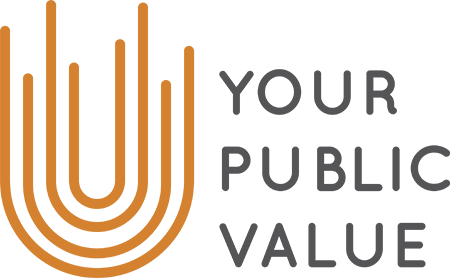To the skeptic (and the optimist alike), public value demands finding synergies and making more with less. Instead of performing the minimum required tasks to make a profit, a company should for example consume less energy while generating more social benefit from its product or operations. But creating such deep change in a company’s structure in a sustainable way requires intentional planning and finding synergies.
Reconfiguring a company based on synergies is a guiding principle for this transformation. In this context, synergy means that a combination of activities delivers more value than the activities could deliver separately. Next level synergy is when one activity delivers value in multiple ways. By sensing and utilising synergies, the mathematical impossibility of doing more with less becomes a bit more feasible.
What could a synergy look like? It looks like a horse.
The Compton CowboysSM grew out of one of the most dangerous neighbourhoods in Los Angeles. A group of 10 friends found their way to a safer, different life by riding horses as children, mentored by a woman who had seen too many local kids fall victim to violence. Although this group of friends has known each other for almost 20 years, the Compton CowboysSM formally organised under the Social Movement trademark in 2017.
Their motto is, “Streets raised us. Horses saved us”. At face value, they are a group of black men and women who ride horses. It is as simple as that. They traverse the urban-rural neighbourhoods on horseback, where violence and poverty are so normal it is practically the area’s identity.
The animal that carries out this simple mission actually serves many purposes to its riders and community. To its members, the horse provides safety, described by one member as making them “invisible” to gang members and police, neutralising the controversial plight of “being black” in public (Thompson-Hernández, 2018). The horses also provide a form of therapy for the Compton Cowboy members, who grew up loosing friends and family to gang violence, among other traumas.
The horses themselves are often rescued from the slaughterhouse, and the process of rehabilitating and training these cast-away horses draws many parallels to the members’ own lives.
And at the barn, training the horses is a communal effort. The inexperienced riders learn from the old hats, becoming a form of education, mentorship, and career training outside of the classroom.
And there is nothing like a horse noisily marching down the street to catch the attention of kids. Like the music of the ice cream truck, the sound of horses walking down the street sends kids running to meet them, and the Cowboys often give pony rides and plant the idea that a grown black man can do something different than be in a gang. The Compton CowboysSM become role models for their novelty, their sheer noticeability, and their ability to choose a different path.
Their freedom in the ambiguous status as a social movement allows them to create synergies in their community that ripple into social change. While not directly a nonprofit to help at risk youth (there is a separate branch to do just that), the existence of this social movement for adult men and women serves to strengthen and better themselves, as well as be a positive influence in their community. The results could not be replicated with a different key element: a band, a skateboard, a basketball. The critical piece in this equation to unlock the synergies is the horse.
Below is a matrix that shows how this one critical piece – the horse – unlocks both service and social needs for the members of The Compton CowboysSM.
| Functions Performed by a Service Organisation | ||
| Skill Development | Empowerment | |
| Need for Safety | Horses provide “invisibility” from gangs and police suspicion. Gives confidence to move safely through neighbourhood | |
| Need to Process Trauma (Therapy) | Members’ need to discuss horse’s training & issues leads to talking about own issues | Horse is a symbol of members’ own trauma Barn is a safe space to process trauma |
| Need for Mentors and Role Models | Horse instigates mentor-mentee relationship between members Members pass down horse training & life tips | Individual attention & encouragement builds confidence |
| Right to work (Horse Rescue/ Care/ Training) | Members learn rare and marketable skills | Pride from knowing unique skills Ability to pursue career or serve others with these skills |
The horse is the link that allows the social needs of the members to be met, while also providing the value proposition in the form of service functions. The Compton CowboysSM developed organically, but these emergent synergies allowed the group to do so much with relatively little.
The metaphor of finding synergies
For those of you reading who are part of large multinational corporations, or even just a medium sized company, the horse analogy may seem frivolous. However, to achieve this mathematical impossibility of achieving more with less, it is worth it to think outside the box. So it is worth the time to look at the horse from a different angle and remember the metaphor of finding synergies.
A personal friend of mine just started her own business. It’s the typical one-woman show of providing horseback riding lessons to children and adults. Years before the business was launched, my friend noticed the incredible pairing between the lessons learned when riding a horse, and how those lessons can be applied to life. So she is searching for the way to transform her business to use the vehicle of horseback riding to provide life coaching.
To any horse rider, the synergy is immediately visible – I for one wondered why I didn’t see it before. In this instance, the horse is again the key component to generating more value from a single activity. Here, the dimensions are clear: learning to ride a horse provides one with both horse skills and life skills.
But there isn’t a one-to-one relationship between a particular horse skill and life skill. It is rather situational, with a particular situation a rider faces with her horse being a miniature example of what she is facing in her own life. The methods she learns to deal with that horse situation can be used to deal with her real life situation.
For example, a person may have a tendency to be passive, and wishes to change that about themselves. Learning to ride a horse puts her in many situations that require her to be proactive – especially in learning how to notice the warning signs that her horse is going to be naughty, and acting upon it to prevent that horse from misbehaving. Following is a visual representation of these synergies:
The value of learning how to ride a horse is now multiplied, perhaps exponentially. Its not simply a sport anymore, it’s a method of managing life’s many challenges. It radically changes the value proposition of my friend’s lesson business, and offers her some very interesting opportunities.
| Horse Skills | ||||
| Life Skills | Ground skills | Riding skills | Situations | |
| Family/Conflict Management | Cause & Effect Analysis Consistency Confidence Empathy Strength/Fitness | |||
| Professional Skills | ||||
| Emotional Intelligence | ||||
| Fitness Motivation |
There is a huge opportunity for synergy and doing more with less, and it can appear from the ground up or from the inside out. There is potential for nearly any business, nonprofit, or social movement to begin finding synergies that can deliver public value. As practitioners of public value, it becomes more and more critical to spot opportunities when others overlook them, and offer encouragement and support when businesses are transitioning into accepting more responsibility for the network of stakeholders who are impacted. What companies are making a change towards developing synergies and generating more public value? What way can public value practitioners recognise and support them?
Anne Bailey is a Member of Your Public Value. She has devoted most of her work to understanding how business can support global development. Previously from the NGO sector, Anne Bailey specialises in international relations with attention to East Asia and West Africa, as well as non-profit and business management. Under her previous name Anne Twombly, she placed first in the 2017 Drucker Challenge. Last year, she wrote about public value and business for Your Public Value.

